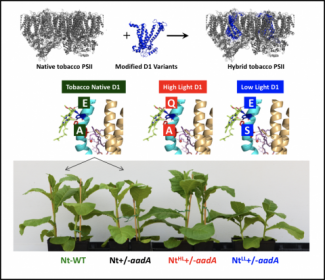PSII
Natural photosynthesis dominates the biosphere as the most widespread and successful metabolism on Earth. Among photosynthetic organisms the oxygenic phototrophs are the most prolific, comprising all known species of cyanobacteria, algae, and higher plants. The early ancestors of these organisms transformed the surface of Earth beginning circa 3 billion years ago from a drab alumino-silicate composite to a lush green carpet visible from Outer Space. These organisms power the planet using the Photosystem II (PSII) enzyme to split water, yielding O2, hydrogen reductants, and proton gradients (energy). Remarkably, only one PSII enzyme has evolved on Earth.
Our goal is to reveal the range of kinetic and energetic performance by photosynthetic water oxidation enzymes in vivo, selected from diverse microbial phototrophs, cyanobacteria and microalgae. The outcome is a fundamental understanding of the principles of light energy conversion to chemical energy and the mechanisms used to oxidize water in nature. Supported by DOE-BES.
